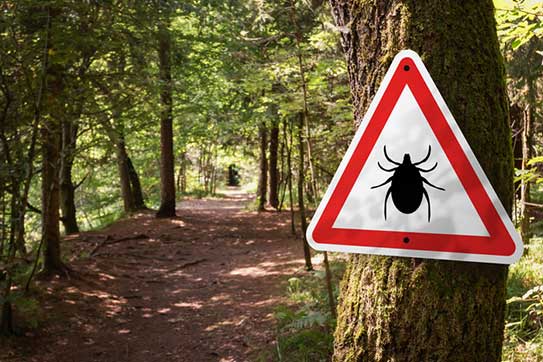Summer is a great time to be outside with your pets, whether it’s taking your dog for walks or sitting out in the sunshine with your cat.
Whilst it’s good for them to get fresh air and be outside, one of the things to look out for is an increased risk of exposure to ticks, especially if they’ve been out running through grasslands, woodlands or shrubs.
What are ticks?
Ticks are parasites that feed on animal and human blood and can cause diseases such as Lyme disease, anaplasmosis and Q fever. Ticks will bite and feed on your pet for a period up to a few days, and drop off once they've had enough.
Where are they found and how do pets get ticks?
Ticks are most active in the warmer months of the year and so are far more likely to attach to your pet during summer, and are most commonly found in areas with long grass, woody areas and areas with lots of wildlife.
Ticks don’t jump or fly, but crawl onto your pet upon contact – they can grab onto fur as a pet walks through the grass or crawl onto them as they lie resting.
What do ticks look like?
They are round, shiny grey bugs with a very small head and large, flattened body (if they’ve been attached for a while). If they’ve not yet attached or have only just attached to your pet, they can have smaller bodies which are a red-brown colour, and you’ll be able to see their eight legs more clearly.
They are normally about 1mm to 1cm long depending on how long they have been attached.
How could a tick affect my pet?
Ticks can carry and transmit diseases such as Lyme disease, anaplasmosis and Q fever. Be on the lookout for any of these symptoms as they may indicate tick-bite related infection:
· Loss of appetite
· Increase in thirst and urination
· Lethargic behaviour or lameness
· Swollen and painful joints
· Swollen lymph nodes
· A fever
· Anemia or particularly white gums
How do you find ticks on your pet?
The easiest way is to run your hands up and down all over your pet as you’ll feel the tick quite easily below the fur, even if you can’t see it.
Ticks do tend to attach themselves to areas around the neck, ears and paws but check your pet thoroughly as they may attach elsewhere too.
How to remove ticks and treat pets
On both dogs and cats the easiest way to remove them is to twist them off, being careful not to squeeze the tick’s body as this can cause its head to detach and remain in the skin and can also push blood back into your pet which increases the risk of infection.
There are handy tick remover devices at most pet stores or online, and using this, simply:
1. Push back the fur where the tick is attached
2. Remove the tick using your device or fingers
3. Check that the entire tick has come away
4. Dispose of the tick by flushing it down the toilet or soaking it in alcohol
Make sure to wash your hands thoroughly.
How can I protect my pet against ticks?
There is a broad range of products available to help you protect your pet against ticks, including tablets, collars and drop-on remedies.
But be sure to consult with your vet or pet shop owner to ensure you select a preventative treatment that is appropriate – cat and dog treatments differ and using one for the other can be dangerous.
If you suspect your pet has been infected by a tick bite, take them to a vet immediately as they will need treatment right away.
For more information on ticks and how to prevent them from harming your pets, contact the RSPCA or Blue Cross, or your local vet.







